Goddess Kali and the Bengal school of art
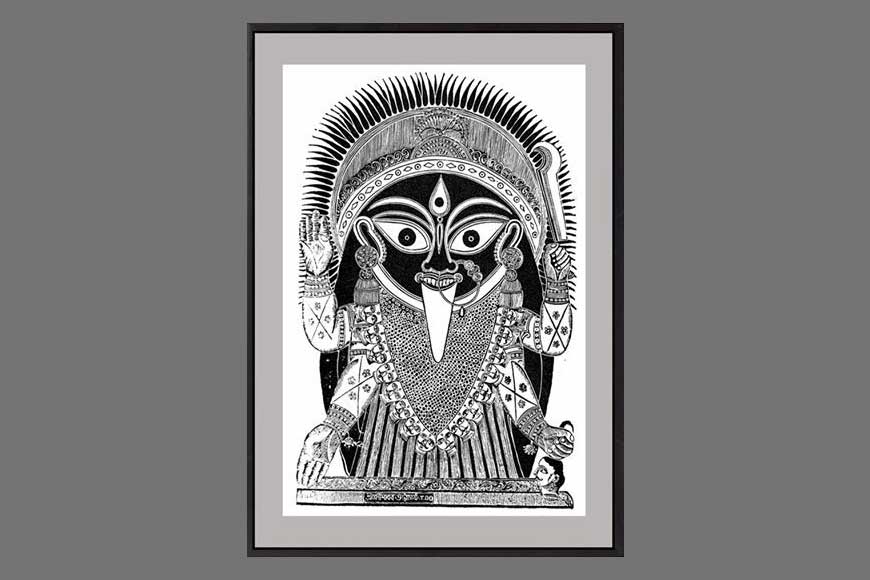
Goddess Kali has been conceptualized and expressed in myriad ways by artists. Songs of piety praising her various facets are galore in Bengal as do artistic expressions, depicting her divinity. It is difficult to zero in on when and how the worship of Goddess Kali turned popular in Bengal. The journey starts from the narrow labyrinthine lanes and by-lanes of North Calcutta, the birthplace of Bottola art and literature in the late 18th and 19th century. This was also the time when Kalighat Pata originated and flourished in the vicinity of Kalighat Kali Temple. These works developed as a distinct school of Indian painting over a period of time. The paintings and patas depicted not only Goddess Kali but also other Hindu gods and characters from Indian mythology. Meanwhile, North Calcutta was revolutionized with the introduction of printing technology that opened a market with immense possibilities. Goddess Kali’s painting from the south, reached the other end of the city and Bottola artist Benimadhob carved the painting in wooden block and reproduced a monochromatic print. This was the beginning of the proliferation of Kali-centric art and literature in Bengal and Benimadhob was a pioneer in spreading the folk cult among urban masses.
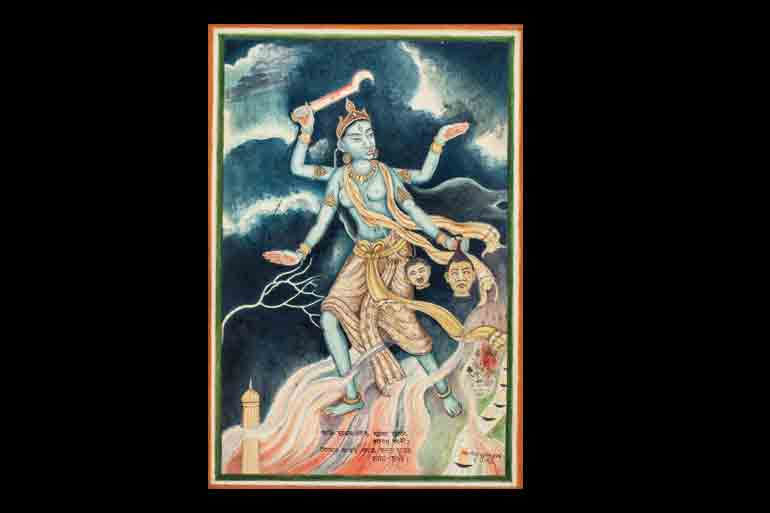 Painting by Manindra bhushan Gupta
Painting by Manindra bhushan Gupta
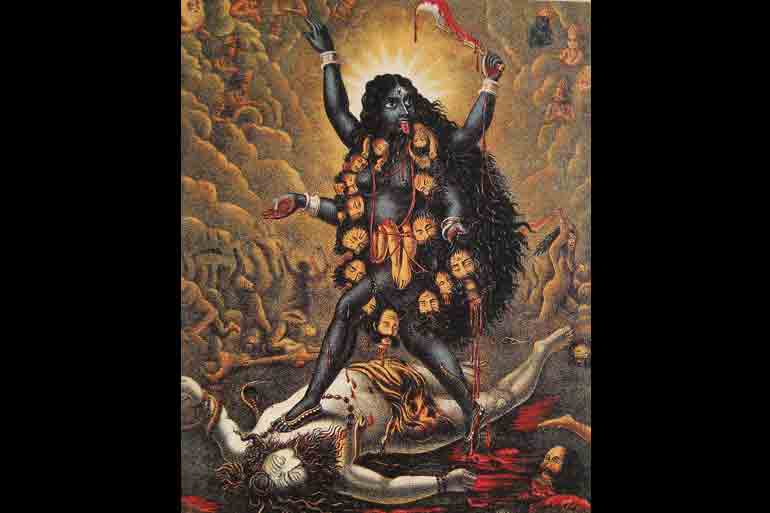 Goddess Kali’s picture was printed on cigarette cases
Goddess Kali’s picture was printed on cigarette cases
During Swadeshi movement, Goddess Kali’s picture was printed on cigarette cases as well! These pictures were reproduced by litho-graph process. However, it took a while for her to extricate herself from endorsing commercial products and spread across the city. Soon Bengalis were captivated by her and accepted her as a household deity.
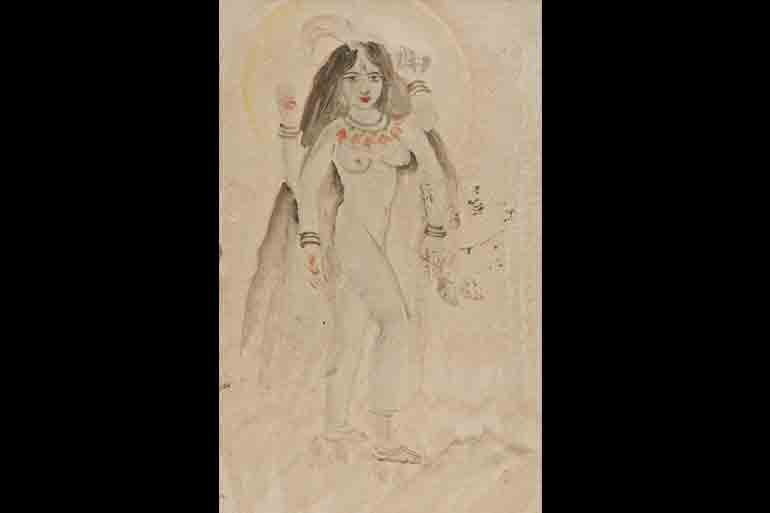 Painting by Nandalal Bose
Painting by Nandalal Bose
But painting of Kali did not end with this. Famed artist Nandalal Bose had drawn a benign form of the goddess. Following that style, Dhirendranath Brahma had also painted a full-length portrait of the goddess. Long and bold lines defined her persona. Both Nandalal Bose and Dhirendranath Brahma have painted in the classical Indian form blending it with Tibetan style. Both the artists wanted to infuse spiritualism in their delineation of Kali. The artists of Kalighat and Bottola had no such intention. They were keen to reproduce the Goddess’ profile as seen at Kalighat Temple in mass scale and make a hefty profit printing and selling them.
The journey starts from the narrow labyrinthine lanes and by-lanes of North Calcutta, the birthplace of Bottola art and literature in the late 18th and 19th century. This was also the time when Kalighat Pata originated and flourished in the vicinity of Kalighat Kali Temple.
Artists have used Kali as an icon to pass social messages. During communal riots that swept former East Bengal, another Bengal School artist, Manindra bhushan Gupta delineated Goddess Kali in the centre, with the Indian flag framing the portrait and spaces between the frame and the portrait strewn with corpses and dismembered limbs. They were faces of nameless, faceless victims. The message he wanted to convey was clear: he wanted the Goddess to rescue the weak and destroy all dark evil forces bent on spreading hatred and carnage.
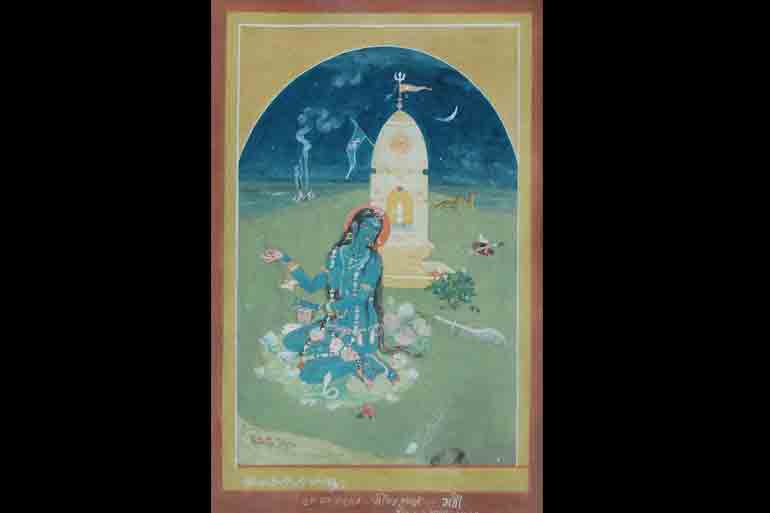 Painting by Dhirendranath Brahma
Painting by Dhirendranath Brahma
The message he wanted to convey was clear: he wanted the Goddess to rescue the weak and destroy all dark evil forces bent on spreading hatred and carnage.
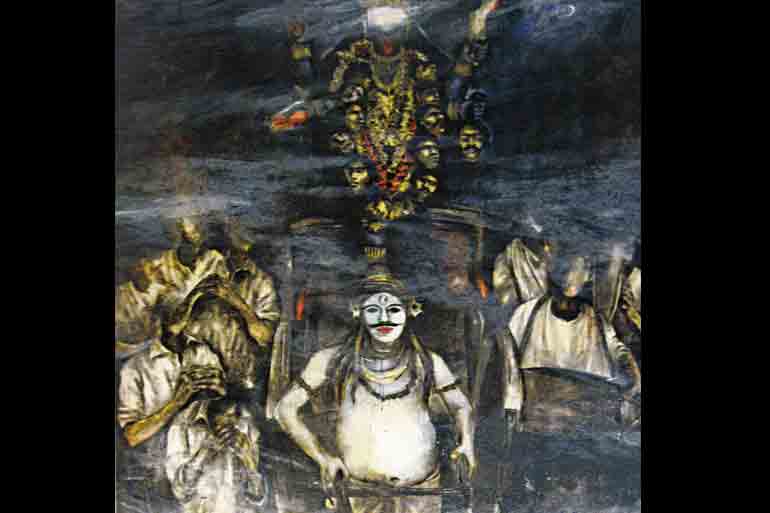 Painting by Subhaprasanna
Painting by Subhaprasanna
Contemporary artist Ganesh Pyne used Kali motif in his Mahabharat series of paintings. Though there is no direct reference to Kali in the epic, the artist imagines Kali as the refuge for those endless warriors who die in the battlefield at Kurukshetra. The endless march of discontented souls can find salvation on in Kali, feels the artist. In this way, Bengal art gives us glimpses of the myriad ways Kali is portrayed.










